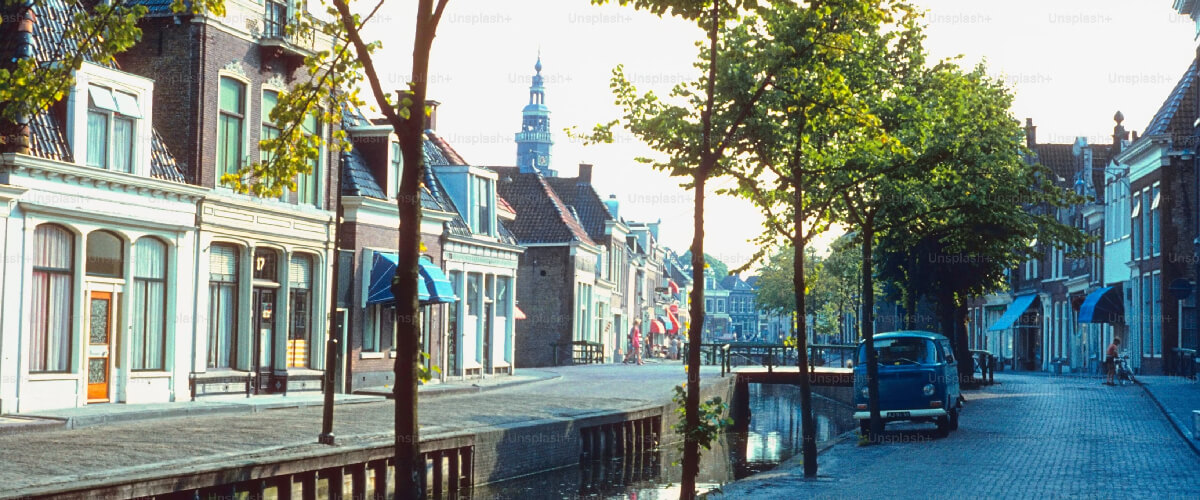Fictional Addresses in Literature and Film - The Impact on Narrative

Addresses in literature and film often hold more significance than simply serving as a backdrop for the story. They can evoke a sense of place, establish a narrative's tone, and even act as a character in their own right. From the mysterious 221B Baker Street to the haunted Hill House, fictional addresses have become iconic, influencing how audiences perceive and engage with the stories in which they appear. This article explores the role of fictional addresses in literature and film, analyzing how they contribute to storytelling and why they resonate so deeply with audiences.
The Power of Place in Narrative
Addresses in fiction are more than just locations; they are carefully crafted to enhance the narrative. A well-chosen address can create a sense of authenticity, grounding fantastical elements in a relatable reality. For example, J.K. Rowling’s 4 Privet Drive serves as the mundane contrast to the magical world of Harry Potter. The stark normality of the suburban house highlights the extraordinary nature of Harry’s true identity, making his transition into the wizarding world even more striking.
Similarly, in film, an address can set the tone for the entire story. The Overlook Hotel in Stephen King’s The Shining (adapted by Stanley Kubrick) is not just a setting but a character in itself. Its remote location and eerie architecture amplify the horror elements, making it a central figure in the narrative. The hotel’s address becomes synonymous with fear and psychological terror, illustrating how a fictional address can transcend its role as a mere backdrop.
Iconic Fictional Addresses and Their Impact
Some fictional addresses have become so iconic that they are instantly recognizable, evoking the stories to which they belong. Sherlock Holmes’ 221B Baker Street is perhaps one of the most famous addresses in literature. It not only situates the detective in a specific time and place but also adds to his persona as a man of intellect and precision. The address has become a symbol of detective fiction itself, representing the genre’s analytical and methodical approach.
Another example is 742 Evergreen Terrace, the home of the Simpsons. This address has become emblematic of the show’s satirical take on American suburban life. The house, with its familiar layout and quirky design, reflects the personalities of the characters and the often absurd situations they find themselves in. The address grounds the show’s surreal humor in a recognizable reality, making the satire more accessible to the audience.
In film, the apartment at 425 Broome Street in Ghostbusters serves as a headquarters for the eccentric team. The address symbolizes the group’s transition from obscure scientists to public heroes. It also reflects the blend of the ordinary and the supernatural that defines the film, with the mundane location being the site of extraordinary events. The address becomes a part of the film’s identity, contributing to its cult status.
The Role of Addresses in Building Atmosphere
Addresses in fiction are often used to build atmosphere, adding layers of meaning to the narrative. In Gothic literature, for instance, the address of a haunted house can evoke a sense of dread and anticipation. Hill House in Shirley Jackson’s The Haunting of Hill House is a prime example. The address itself, with its ominous name, sets the tone for the story. The house is more than just a setting; it is a malevolent force that drives the plot, with its address becoming synonymous with horror.
Similarly, in urban fiction, addresses can reflect the socio-economic conditions of the characters. The high-rise towers of The Wire serve as a symbol of the systemic issues facing the residents of Baltimore. The specific addresses in the series highlight the harsh realities of life in these neighborhoods, grounding the story in a gritty realism that resonates with viewers.
Fictional Addresses as Symbols
In some cases, fictional addresses become symbols, representing broader themes within the narrative. The White House in dystopian fiction often symbolizes the corruption or downfall of government. In The Hunger Games, the Capitol’s address represents the center of power and oppression, contrasting sharply with the impoverished District 12. The addresses in the series highlight the stark divide between the ruling class and the oppressed, reinforcing the themes of inequality and rebellion.
In romantic literature and film, an address can symbolize love and longing. The Parisian apartment in Amélie represents the protagonist’s romanticized view of life. The quaint address in Montmartre becomes a symbol of her dreams and desires, infusing the narrative with a sense of whimsy and nostalgia.
The Cultural Impact of Fictional Addresses
Fictional addresses often transcend their original context, becoming part of popular culture. Fans of a book or film may seek out real-world locations that resemble these fictional addresses, or even visit the actual places used in film adaptations. For instance, tourists flock to Baker Street in London, hoping to catch a glimpse of Sherlock Holmes’ world. The cultural impact of these addresses extends beyond the pages of a book or the frames of a film, influencing how people engage with literature and cinema in the real world.
Moreover, these addresses can inspire real-world creations. The fictional address of 30 St Mary Axe in London, better known as “The Gherkin,” inspired the design of the actual building. Fictional addresses can shape architectural trends, influence urban planning, and even inspire new works of fiction, demonstrating their lasting impact on culture and society.
Conclusion
Fictional addresses in literature and film play a crucial role in shaping narratives, creating atmosphere, and resonating with audiences. They are not just places where stories happen but are integral to the storytelling itself. From the eerie Hill House to the iconic 221B Baker Street, these addresses become characters in their own right, influencing the tone, themes, and cultural impact of the narratives they inhabit. As symbols, settings, and sources of inspiration, fictional addresses continue to captivate audiences, reminding us of the power of place in the art of storytelling.